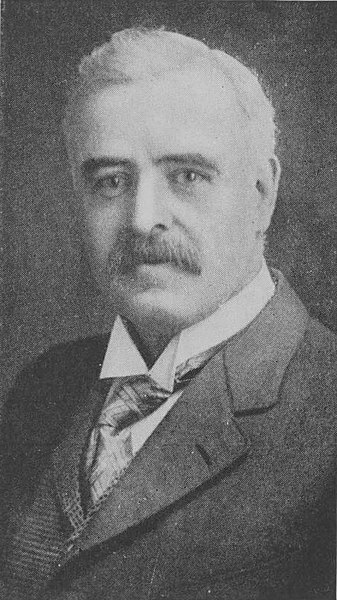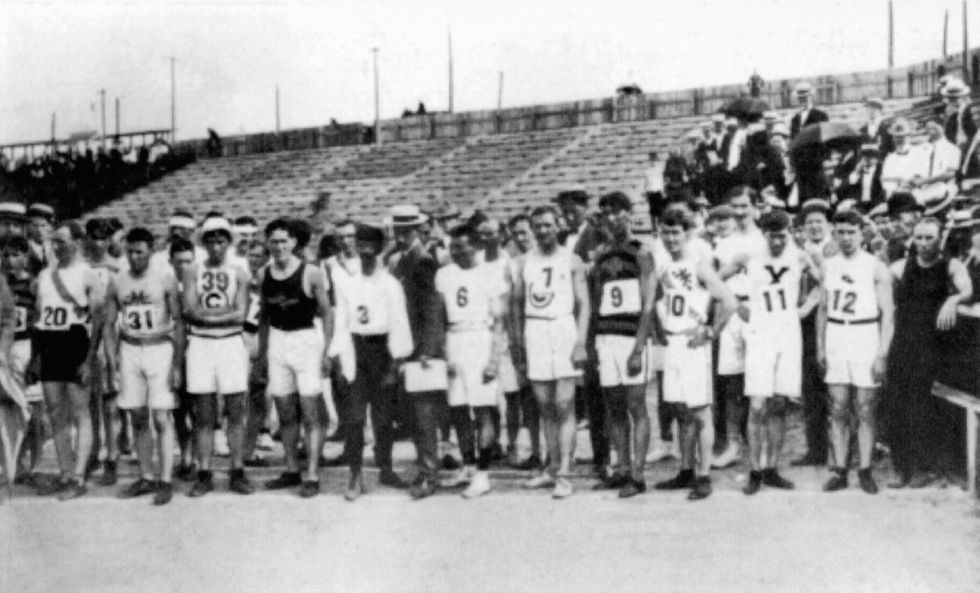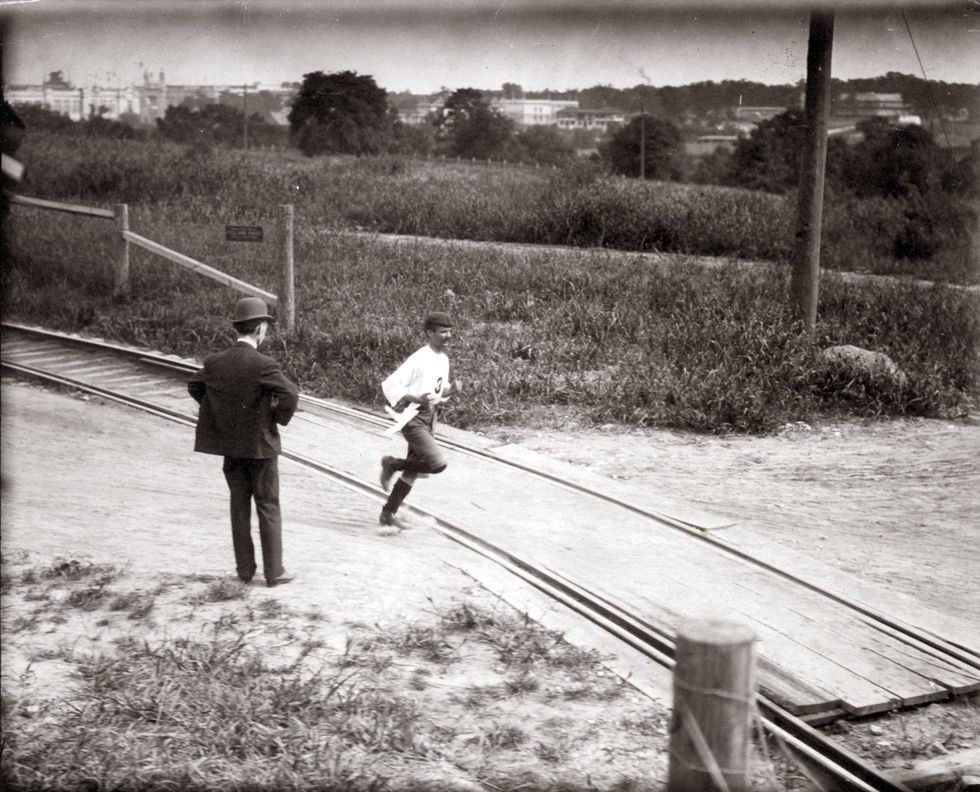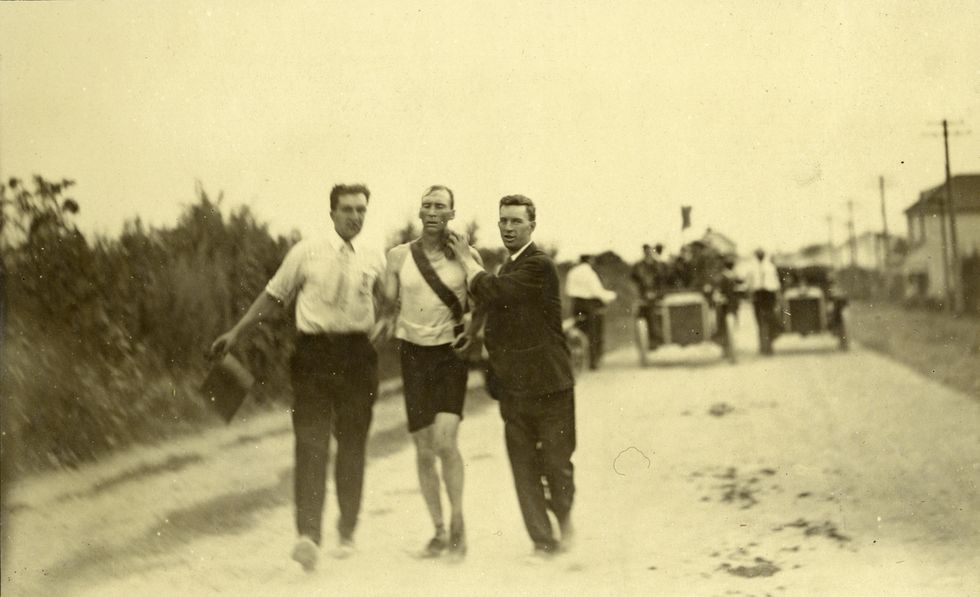When I began looking for the noteworthy stories from the III Olympiad, I had no idea what I’d find. Every Olympics has its particular set of anecdotes and narrative but I didn’t expect to see so many odd elements arise from a single Games. And, of all the oddities I discussed in the previous post, the marathon may be the strangest of all. So strange that it merited
A post all its own.
You may recall that the official marathon distance of 26 miles 385 yards (42.195 km) was set at the London Games in 1908. At 24.85 miles (40km), the marathon distance in Saint Louis would be slightly shorter than this standard. However, the route of the course laid out along craggy, sometimes unpaved streets, with ascents up 300 foot high hills, and with no barriers of any kind not even ropes separating it from daily life left the runners to contend with road and rail traffic, with people walking their dogs, and so much chaos that one official described it as “the most difficult course a human being was ever asked to run over.”
Our friend from the “Anthropology Days”, James E Sullivan,
[Photo from Wikimedia Commons – Public Domain.]
not only designed the course but endeavored to challenge the runners even further by allowing only two water breaks – at the six and 12 mile marks respectively. This lack of water was deliberately arranged by Sullivan so he could study the effects of “purposeful dehydration” and he picked a fine day for that so-called study. You see, the air temperature was in the mid to high nineties and the heat index would have been well over 100 degrees. (One source I read put the heat index at 135 degrees but, even as brutal as I know Saint Louis summers can be, I have to believe that is exaggerated.)
Let’s get it started out here.
At a few minutes past 15:00, David R Francis, former Missouri governor and president of the Olympic Organizing Committee, stood in front of a motley group of 32 runners in the newly built stadium that bore his name, pointed his starter’s pistol to the sky, and fired sending the men on their way.
[Photo from runnersworld.]
They would circle the track five times before exiting the stadium. Of the 32 who started only 14 would “finish” the race and one, John Lordan, who had won the previous year’s Boston Marathon, walked off the track and began vomiting – failing to even make it onto the road portion.
Two of the runners who did finish aren’t clearly visible in the photo above.
[Photo from Wikimedia Commons – Public Domain.]
Len Taunyane and Jan Mashini both members of the Tswana tribe from South Africa became the first Black men from that continent to compete in the Olympics. Taunyane and Mashini finished ninth and twelfth respectively while Bertie Harris their white South African teammate failed to finish the race.
(Sullivan claimed the marathon was evidence of racial superiority. He was supported by Charles J P Lucas, a physician and writer who traveled by car observing and assisting the eventual champion, Thomas Hicks. He would later write a book about the Saint Louis Olympics in which he claimed, that the marathon established “the stamina of the Caucasian race and the superior distance-running powers.” His book omitted the finish of the South African contingent.)
Hicks passed Fred Lorz (a runner who will appear later in this saga) and had the lead as the runners exited the stadium where a phalanx of horsemen stood ready to clear the red flag lined route along the dusty midwestern roads. As the horses kicked up dirt in front of the runners, a motorcade of journalists, doctors, support teams, and race officials trailed behind them doing much the same and ensuring that for most of the course the racers were enveloped in a swirling dust cloud.
As the runners neared the first water station at the six mile mark, Arthur Newton (#12 in the photo above) held the lead. Trailing close behind him was the Cuban runner Félix Carvajal.
(Carvajal was one of many unusual characters in this race. A mailman by day, he raised the money for his trip to America by running exhibitions in Cuba. Carvajal was also something of a gambler and, on a layover in New Orleans, he lost his remaining funds and had to hitchhike to Saint Louis. He arrived at the race just in time in a long-sleeve shirt, hat, pants, and heavy shoes. A spectator helped him cut his pants into shorts prior to the start of the race.
[Carvajal crossing railroad tracks in the 1904 Olympics marathon from Runnersworld.]
About 10 miles into the race, Carvajal stopped to find some snacks. Accounts differ regarding what happened next. One story says he ate rotten apples from an orchard along the side of the road while another report said he swiped peaches from some of the spectators. Regardless, there’s little dispute concerning what occurred after he ate the fruit. His snack gave him cramps so he dropped himself down on the side of the road and took a nap. Amazingly, he would go on to finish fourth.)
Meanwhile, another runner also began suffering from muscle cramps at about the 10 mile mark. Rather than following Carvajal’s lead and taking a nap, Fred Lorz flagged down a car for a ride back to Francis Field. (This still won’t be the last we hear about Mister Lorz.)
Sometime in the middle of the race a pack of dogs chased Len Taunyane a mile off the course. Taunyane would still finish ninth. A near tragedy arose at mile 19. San Franciscan William Garcia collapsed to the side of the road where he began coughing up blood. Inhaling the unending dust cloud had taken a severe toll on his esophagus and stomach lining. Heat, dehydration, and dust had combined to cause him to begin hemorrhaging and the doctors who treated him at the hospital reported that had he endured an hour longer Garcia would have bled to death.
We have a winner! Or do we?
After he passed Sullivan’s final water station, the heat, humidity, and general exhaustion began to take a toll on the race leader John Hicks. As Hicks began to cry out for water, two men in his crew came to his aid and propped him up for some miles. Tiring of his ceaseless demands but feeling bound by Sullivan’s rules, they compromised by sponging his mouth with warm distilled water.
[Photo from Runnersworld.]
And still he persisted in his pleas for water. With about four miles left in the race, his trainers decided to give him something stronger than a damp sponge. They fed him a combination of egg whites and 1 milligram of strychnine sulfate. (Yes, that’s the same strychnine used in rat poison and that is still banned by the World Anti-Doping Agency because of its stimulant effect at low doses.) This is generally considered the first recorded use of performance enhancing drugs at the Olympics.
Meanwhile, Lorz, fully refreshed from riding 11 miles decided to hop out of the car and “finish” the last bit of the race on foot. He entered the stadium and crossed the finish line in a bit under three hours to great acclaim as an American winner. First Daughter Alice Roosevelt Longworth was about to present him the gold medal when a spectator exposed his deception. (Lorz received a “lifetime ban” that lasted less than a year. He competed in and won the 1905 Boston Marathon.)
Back on the course, Hicks’ pace had slowed to a walk. This earned him a second egg white and strychnine cocktail with an added brandy chaser. Though less than two miles from the finish, a delirious Hicks believed he had 20 miles left to run and begged his handlers to let him lie down. Hicks staggered into the stadium where his two-man crew hauled him across the finish line. His feet were still pedaling when they hoisted him aloft as he was declared the winner. His winning time of 3 hours 28 minutes is more than 30 minutes slower than the next slowest time in Olympic history.
John Hicks never ran another marathon.





Wow…the 1904 Olympic marathon was quite the cluster…never heard the story before so thank you for sharing in a way that was both interesting and shameful for the participants at the same time…
And now you have a cool(?) story to tell your friends.